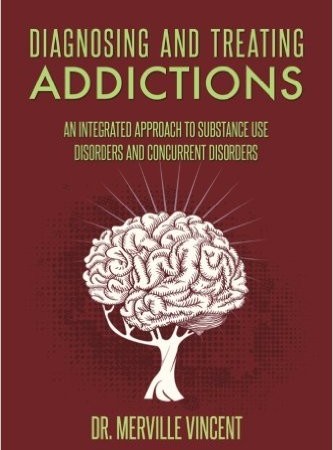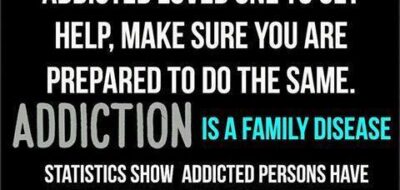It is my great pleasure to introduce Dr. Vincent who has graciously agreed to educate us on the opioid epidemic we are facing today. Dr. Vincent is a leading psychiatrist, who has over twenty years’ experience treating addiction and concurrent mental health disorders.
Dr. Vincent says;
This week started with an interview request from a local television station asking for my professional opinion on a string of recent accidental overdose deaths in our geographic area. These deaths were presumably related to opiates, most likely fentanyl, although final results are not available I had already completed addictions psychiatry consultations the morning of the interview on two “twentysomething” young men, who were admitted over the weekend with very serious addictions to opiates. This introduction to the week was a harsh reminder of the drastic toll that addictions have been taking on so many members of our community. So – what do we need to know about these “opiates”?
What are opiates? Opium is a residue contained in the poppy plant, which has been harvested as a valuable commodity for centuries. It has been used for its unique properties for almost 5000 years. Its value for reducing pain and inducing euphoria is legendary. The opium residue contains both morphine and codeine which are naturally occurring opiates. In the early 1500s, it was discovered that the morphine component could be more readily extracted and therefore become more potent through the use of alcohol which led to the advent of Laudenum. In 1803 morphine was isolated and became commercially available in the early 1800s. Shortly thereafter, the hypodermic needle was invented, creating a perfect marriage. Morphine was highly valued during the war years for management of pain in war situations. Many injured soldiers subsequently became addicted to morphine. Opium dens proliferated in China in the early 1800s creating one of the early opiate epidemics. The addictive potential of morphine became very evident as its use increased. It was contained in a number of patent products which were sold during the 1800s and early 1900s by traveling salesmen. Heroin was isolated in 1874 and was initially proposed as a treatment to help people with the morphine addiction! As time has progressed and our knowledge of chemistry advanced, many new products were discovered in the opiate/opioid family. In general, these new compounds were either formed by modifying the original morphine and codeine contents of opium or novel “synthetic” compounds were generated which acted on the same biological “opiate receptors”. Fentanyl is one such “synthetic opioid”. As new compounds were discovered, the potency escalated such that heroin was much more potent than the original morphine and fentanyl is much more potent than morphine or heroin. The end result was a potentially much more toxic and lethal compound when used inappropriately. Opiate overdoses generally lead to death via shutting down the breathing centers of the brain.
Opiate epidemics have had many different faces over the last two hundred years. The Chinese opiate dens, almost exclusively males, were the prototype in China during the 1800s. At the turn of the 19th century middle-class women were commonly addicted to opiates as they were not allowed to enter bars and the patented products at the time marketed heavily to women, and surprisingly to their children. There were no drug laws at the time and opiates and cocaine could be accessed without restriction. By the 1960s there was a well-established heroin population which was generally made up of very seasoned addicts who were first introduced to opiates through heroin. In contrast, the current epidemic frequently involves younger men and women who were first introduced to opiates through prescription medications rather than through heroin. Many would discover heroin if they were unable to access prescription medications or if they could not afford the more expensive medications compared to heroin.
Ultimately, as one progressively uses opiates, one develops tolerance i.e. needing more of the drug for the same effect and dependence i.e. withdrawal syndromes are suffered upon discontinuation of the drug. This creates the perfect trap. Opiate addicts feel unable to stop using their drug, for fear of suffering very uncomfortable withdrawal symptoms. On the other hand, the negative consequences of addiction continue to escalate as their addictive use continues. Inevitably, dosage requirements escalate dramatically, life deteriorates and those you love the most are most negatively impacted. This perpetuates a continued cycle of shame and guilt which is relieved through further drug use. Families watch helplessly as their loved one continues to deteriorate functionally, emotionally, spiritually and physically. So where does one go from here?
Typically, the addict continues to deteriorate until some intervention or negative consequence(s) occurs, leaving little option but to seek help. This intervention may be formal or informal. For example, one option is be to hire an interventionist for the purposes of a professional intervention. Conversely, an informal intervention might involve generating negative consequences by setting out personal limits and boundaries such as not providing money or housing, which prevent the enabling process and precipitate change. I’ve seen this process work very effectively in a number of our patients who came into treatment. There are several important facts to consider at this point in time
1– Withdrawal from opioids is NOT dangerous or life-threatening, although it is extremely uncomfortable.
2-If you continue to enable your family member, they will not get well. Paradoxically, even though you may experience some transient relief through the enabling behavior, you are treating yourself, not your loved one!
3-Opiate addicts will not get well simply by going to detox! Outcome statistics are dreadful for detox alone.
4– Most addiction medicine experts believe that opioid substitution treatment should be initiated using either methadone or buprenorphine/Suboxone. These medications have been shown to stabilize opioid addiction in many cases and prevent/reduce many of the untoward behaviors associated with addiction. The long-term challenge is whether to continue these medications for a very long time, or consider getting off these medications at which time the risk of relapse increases.
5-We have had very good results when detox is followed by an intensive residential treatment experience lasting approximately 6 months and followed with assertive community management involving counseling, group therapy and drug screening. The major concern with the abstinence approach is that once patients are detoxified from opiates, they lose their tolerance to the drug, leaving them susceptible to accidental overdoses and possible death. The abstinence approach me be further enhanced with the use of medications which block the action of opiates called opiate antagonists (eg Naloxone, Naltrexone).
6-Naloxone Recovery kits have been life-saving in various regions. These kits have been distributed to addicts, as well as friends and families of addicts, to immediately reverse opioid overdose and prevent respiratory depression and death.
I hope this provides some useful information for those interested in opioid addiction! A much more detailed discussion of many of these issues is available in my recently available text which is written with a lay audience in mind.
To read more on Diagnosing and Treating Addictions: An Integrated Approach to Substance Use Disorders and Concurrent Disorders please copy the link below to your browser.







